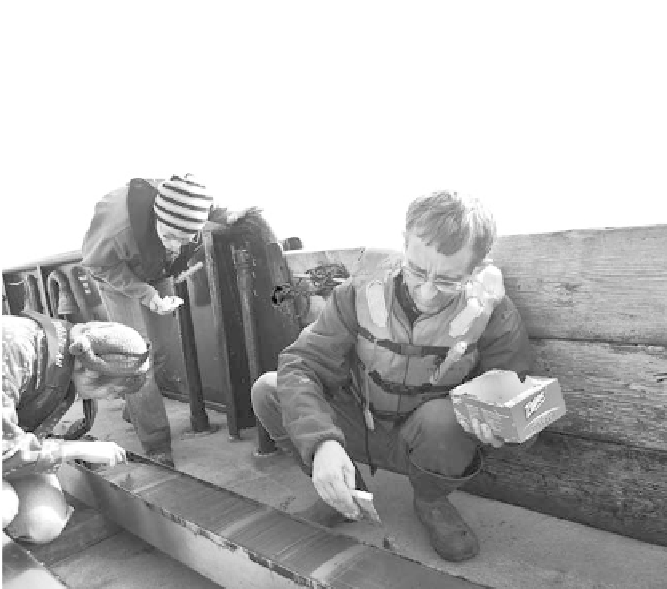Geoscience Reference
In-Depth Information
f igu r e 14 . Arndt Schimmelmann and colleagues examining varved sediments cored
from beneath the Santa Barbara Basin along the Southern California coast. (Photo courtesy
of Arndt Schimmelmann, University of Indiana.)
of tree rings, these alternating sedimentary layers can be used to re-create a
timeline by counting from the top of the core downward, with each pair of
light and dark sediment layers representing one year (see i gure 14).
Fossils of phytoplankton and other microscopic marine organisms contain
information about changing water temperatures, coastal upwelling, nutrient
levels, and ocean circulation. Pollen blown into coastal waters and preserved
in accumulating sediments provides information about past vegetation
from nearby coastal regions, and the composition and amount of sediments
carried by rivers contain clues about precipitation and runof , including the
relative size of l oods.
On land, sediments deposited in freshwater environments can also be
great preservers of paleoclimate information. Lakes, ponds, swamps, and
marshes—all damp, mostly low-oxygen environments—are ot en character-
ized by slow decomposition processes that allow organic matter to be pre-
served for a long time. In these sediments, the pollen, charcoal fragments,
fossils, organic material, and detrital material, including their chemical and
isotopic compositions, are all used in paleoclimate research. As with the
coastal ocean, lake sediments are obtained by coring the bottom sediments
beneath the water (see i gure 15).




























